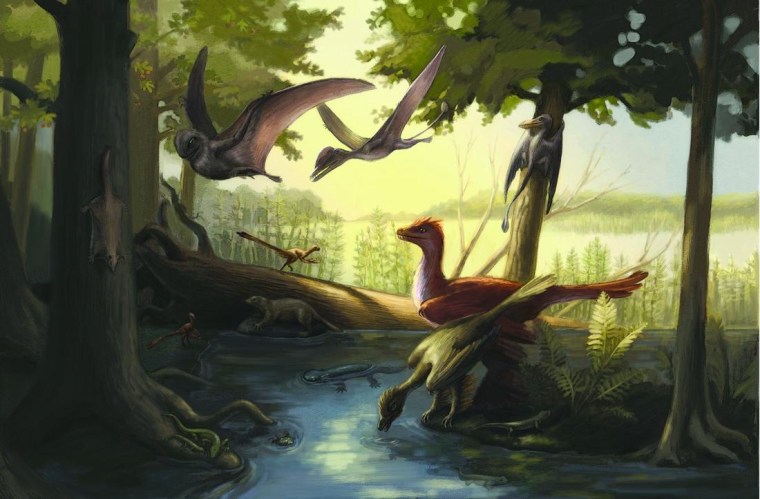A fossil bed in China that contains some of the world's most exquisitely preserved feathered dinosaurs, early birds, reptiles and mammals may also be home to an equally rich set of older fossils from the Middle Jurassic, a new study finds.
These older fossils, dating back about 160 million years, contain the earliest known gliding mammal, the earliest swimming mammal, a flying reptile and the earliest feathered dinosaurs. Now, a new study classifies these fossils as belonging to a distinct ecological group, or biota.
The new biota was found in layers of rock beneath the Jehol Biota, a famous collection of 130 million-year-old fossils from China's western Liaoning Province and nearby northeastern China. The Jihol organisms are thought to have been preserved in a Pompeii-style eruption. In recent years, fossils that are 30 million years older have surfaced from beneath the Jehol Biota but were not definitively linked to the same time period. [In Photos: Wacky Fossil Animals from Jurassic China]
The researchers cataloged the older fossils in unprecedented detail, naming them the Daohugou Biota, after a nearby village in Inner Mongolia. Like the Jehol fossils, the Daohugou fossils have remarkably intact skeletons, often still containing soft tissues and even feathers.
The fossil trove dates from the Middle-Upper Jurassic, a period when birds are thought to have evolved from feathered dinosaurs. The team found birdlike feathered dinosaurs, but no actual birds.
At the moment when birds and dinosaurs split from each other, "you can barely tell them apart," said David Hone, a dinosaur biologist at Queen Mary University of London and lead author of the study, published Tuesday in the Journal of Vertebrate Paleontology.
Researchers also found mammals that glided from trees, a classic transitional form of flying reptile called a pterosaur and a "weird little buck-toothed dinosaur," Hone said.
— Tanya Lewis, LiveScience
This is a condensed version of a report from LiveScience. Read the full report. Follow Tanya Lewis on Twitter and Google+. Follow LiveScience on Twitter, Facebook andGoogle+.
